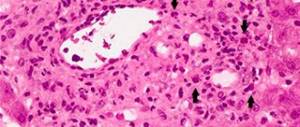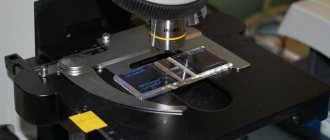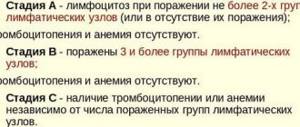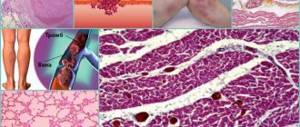General information about white blood cells
What exactly are leukocytes? These are elements that protect against all kinds of bacteria and other harmful viral agents. Their bodies consist of a heterogeneous group of blood cells, different in purpose and morphology, but united by the fact that they lack color and have a nucleus.
All types of cells actively move, they penetrate the walls of the capillaries, capturing and then digesting all foreign agents. When the number of such agents increases greatly, white blood cells increase in size upon absorption and then are destroyed, releasing substances that provoke the start of an inflammatory process within the body, characterized by an increase in temperature and the appearance of tissue swelling.
The functions of leukocytes are such that, while protecting the body, many cells die. To restore the norms of their presence, the tonsils, lymph nodes, bone marrow, and spleen continuously produce these bodies. The classification divides them into two types: agranulocytes, granulocytes.
Types of leukocytes
As mentioned above, leukocyte is a collective name for several cells that, unlike red blood cells, are colorless (which is why they are called “white blood cells”).
The fundamental difference between a leukocyte is that it has a nucleus and is large in size.
Types of leukocytes differ in size, nuclear shape, development, and specificity of function. But they all have one thing in common - the presence of a core. Despite the fact that leukocytes have a common progenitor, the cell sizes differ, so a monocyte is 5 times larger than a lymphocyte.
Leukocytes are divided into two groups:
- granulocytes
- agranulocytes
Granulocytes - neutrophils, basophils and eosinophils - have an irregularly shaped nucleus, divided into segments (from 2 to 7) . The older the granulocyte, the more segments there are.
Agranulocytes - lymphocytes and monocytes - have one, round-oval nucleus.
What is leukocytosis
In a situation where leukocytes die en masse, an inflammatory process starts. Leukocytosis and blood pathology develop. Why can the number of leukocytes in the blood suddenly increase sharply? The cause is a physiological and sometimes pathological process. The first option, in which therapy is not required, is provoked by the following factors:
- grueling work;
- eating certain foods;
- nutritional features;
- pregnancy;
- contrast water procedures;
- vaccination;
- the period preceding the onset of menstrual bleeding.
An increase in the level in the case of pathology certainly requires examination and a repeat examination a few days later. This will eliminate the possibility of counting errors in the blood test. When there are no physiological causes, an increase in the number of corpuscles in an adult indicates a problem. Frequent causes for pathological leukocytosis are:
- infectious disorder;
- inflammatory process;
- non-infectious type of inflammation;
- heart attack;
- extensive burn;
- cancer tumor;
- significant blood loss;
- proliferative pathologies of hematopoiesis;
- splenectomy;
- uremia or diabetic coma.
Leukocytosis may indicate chemical poisoning, the initial phase of radiation sickness.
Causes of increased leukocytes in females
For the female body, there are the greatest number of physiological reasons when wbc becomes higher than normal. Their body is more susceptible, so hematological parameters often change. Thus, before menstruation there is a significant increase in leukocytes, and this indicator also increases during pregnancy and childbirth. After the baby is born, the mother’s white blood cell level should return to normal. Everything else indicates the presence of pathology.
There have been cases when a pregnant woman had a leukocyte count of 18 units. Each body reacts to pregnancy in its own way; the causes of elevated leukocytes in the blood do not indicate that the woman is sick with something. So doctors do not recommend worrying about this, especially if the indicators are high, an examination to identify inflammatory infections begins immediately. Detected leukocytosis in a pregnant woman is carefully monitored to prevent miscarriage in the later stages. After childbirth, the level of leukocytes is restored within a month.
Features of the disease
Men
When a man’s wbc levels are elevated, this is not necessarily a sign of pathology. With age, this importance decreases, so even infectious diseases are not necessarily capable of provoking hyperleukocytosis. Elevated white blood cells are often found after a heart attack, when a necrotic area has appeared in the cardiac tissues, destroying the tissue.
What else do doctors talk about if leukocytes are increased? One might suspect:
- cholecystitis during exacerbation;
- inflammation of the prostate;
- chronic pancreatitis;
- inflammation of the testicle.
The reason why leukocytes are elevated for a long period of time can be even a minor stroke. Prostate surgery and inflammation due to the presence of an enlarged catheter can also raise white blood cells.
Features of an increase in leukocytes, when this indicator is detected in men (with a pathological nature of the problem), become:
- inflammation inside the pelvis;
- kidney problems;
- diabetes;
- malignant tumors.
The causes of the physiological type of leukocytosis, which provokes an increase in the total number of leukocytes present, are:
- power interruptions;
- intense physical labor;
- taking medications without medical prescription or dosage exceeding the recommended concentration.
Women
An increase in the concentration of white cells is a normal condition for a pregnant woman, when a blood test after deciphering it absolutely did not reveal an inflammatory process. Then the cause becomes the reaction of the immune system to the development of the fetus. A final diagnosis is never made only by examining blood cells; additional examinations are certainly organized - not only laboratory, but also instrumental.
If the indicators for mastopathy increase, which can cause the value of the proportion of leukocytes to increase, the risk of cancer increases, so even if the cells are slightly enlarged, but exceed the normal level, it is recommended to visit a doctor. What does it mean? In pathology, cells inside the mammary gland are replaced by special connective tissue. This condition indicates an increasing benign fibroadenoma, and it can already develop into a malignant neoplasm.
A problem such as mastitis causes an increase in white blood cells, especially after childbirth. In the case of this pathology, the value of white cells increases, approaching 12 units per field, the temperature rises, well-being worsens - the body attacks the inflammatory process, which is infectious in nature. A doctor is required to treat it, so when symptoms of sweating develop against a background of weakness, be sure to rush to the clinic.
The next provocateur that can increase the number of white cells is inflammation of the uterine appendages. If such a disease is provoked by infections, it often proceeds covertly and for a long period. Tuberculous adnexitis also increases leukocyte counts, when Koch's bacillus penetrates hematogenously (or through lymph) into the lungs from the source of infection.
In women suffering from leukemia or leukemia, pathological changes can provoke:
- pregnancy;
- the period preceding menstruation;
- injuries after childbirth;
- toxicosis.
In other situations, leukocytosis provokes:
- poor quality nutrition;
- refusal of a healthy lifestyle;
- frequent fascination with hot water procedures.
Female pathological leukocytosis is caused by:
- infections;
- heart pathologies;
- physical injuries;
- serious blood loss.
Children
In a child’s blood, this indicator, if it is elevated, is sometimes a sign of a parasitic, infectious disease. With allergies, there are no characteristic signs of leukocytosis, but a high percentage of eosinophils is noted. It should always be taken into account that the norm and age are interconnected. The younger the baby, the higher the leukocyte component of the blood formula.
The percentage of leukocytes close to the highest level of the norm is a signal of probable acute bronchitis or pneumonia. When there are less than 10 leukocytes, pneumonia is probably caused by Haemophilus influenzae.
The presence of infant leukocytosis is traditionally asymptomatic - the problem is determined only when blood is taken and analyzed. Regardless of the presence or absence of symptoms, such a state of the body is dangerous for children, since undesirable consequences are likely. Provoke childhood pathological leukocytosis:
- all kinds of infectious pathologies;
- development of leukemia.
The main physiological provocateurs are:
- powerful emotional overload;
- poor quality nutrition;
- grueling physical overload.
Elevated leukocytes in the blood of men: what does it mean, causes, treatment
When leukocytes in the blood are elevated in men, there are different reasons for this. White blood cells are living cells related to the immune system that are produced from cells in the bone marrow.
Cell maturation occurs both in the lymph nodes and in the thymus and spleen. They are responsible for immunity at the cellular level. These elements can also contribute to the production of the body's humoral defense mechanisms.
Increasing their content to resist the body against certain microorganisms that contribute to the development of pathologies.
Human immunity consists of 5 variants of white cells:
- agranulocytes (lymphocytes and monocytes);
- granulocytes (basophils, eosinophils, and neutrophils).
The proportional ratio of these groups changes - this parameter is influenced by the gender and health status of the patient, his age. This ratio of the number of white cells is called the leukocyte formula. It is determined only by performing a detailed examination of a blood test. Granulocytes or granular leukocytes in their structure contain capsules with biologically active components.
The most numerous type of granulocytes are neutrophils. The degree of immunity endurance depends on the level of neutrophils. When neutrophils encounter an “enemy,” they capture and then process foreign particles at the cellular level.
The presence of a high concentration of eosinophils in the blood - what does this mean? The particles help eliminate the allergic reaction, they capture foreign cells and antibody complexes, and resist helminthic invasion.
Basophils are small representatives of leukocytes that enter the site of inflammation.
In the process of life, they degenerate into mast cells, then produce mediators of the onset of inflammation, attracting other immunocompetent elements to destroy foreign agents. These actions block the development of inflammatory diseases when an infection enters the body.
Agranulocytes without substance are monocytes and lymphocytes.
The first type of leukocytes absorb microbes and also destroy the source of inflammation, which is pathological in nature, promoting the regeneration of damaged tissues.
When foreign agents of an infectious nature are introduced, monocytes produce antibodies that bind foreign cells, removing them from the body, preventing the development of diseases.
Lymphocytes eliminate cells that are atypical and damaged by the body, while simultaneously recording a certain immune memory. They remember the foreign agent after the first contact, so when it again penetrates the blood, the alien is effectively destroyed.
Leukocytes protect against the development of inflammation due to the penetration of harmful microflora, toxins, parasites, tumor cells, which maintains the body’s normal state.
An increased level of leukocytes in the blood is an unfavorable indicator for the male sex. It indicates infection of the body and the development of such pathologies:
- vein diseases;
- large burns;
- rheumatoid arthritis;
- lupus erythematosus;
- heart attacks of various organs;
- mononucleosis;
- cancer pathologies;
- chemical poisoning;
- injuries causing severe bleeding.
Also the cause of an increase in leukocytes are:
- climate change;
- sudden change in weather;
- taking contrast baths.
Such processes, in which the number of leukocytes in the blood increases, require careful examination and adequate treatment. For an adequate therapeutic effect for leukocytosis in men, it is important to find out the provocateur of this phenomenon.
The main reasons for increased white blood cell counts:
- physiological parameters;
- pathological effects.
The physiological character that can provoke the leukocyte formula of male blood comes in several types:
- The neonatal period, when after birth the cell count is unstable.
- Digestive type, in which there is an increase in units in the blood substance field 2–3 hours after eating. It has been noticed that the more satisfying and plentiful the food, the higher the concentration increases. For this reason, it is recommended to donate blood on an empty stomach.
- A myogenic type that develops against the background of physical activity during the contraction of muscle cells. This must also be taken into account when taking the analysis.
- Psycho-emotional problem.
- Orthostatic pathology, observed when the body position changes (from horizontal to vertical).
Leukoitosis in men is more often accompanied by pathologies of an infectious and non-infectious nature. In a separate category there is drug-induced leukocytosis, which is associated with taking a number of medications. Therefore, it is necessary to regularly monitor this indicator during intensive therapeutic measures.
Normal by age
To choose a healing method, it is important not only to identify the root causes of the disorder, but also to know what the norm of leukocytes in the blood of a healthy person should be. The concentration of blood cells, depending on age, must correspond to the following values:
- at the age of 18–25 years (after the formation of immunity, when it is strongest) – 4–11×109;
- in the period 26–35 years (against the background of high psycho-emotional stress) – 3.5–8.5 × 109;
- at the age of 36–45 years (when the process of decreasing the activity of male hormones occurs) – 3–8 × 109;
- in men after 46 years – 2.9–7×109;
- among representatives of the stronger sex after 60 years – 2.8–8.5 × 109.
Deviations of these indicators upward or downward are allowed within 50% of the standard data (this does not always indicate the development of inflammation). Sometimes ESR is higher than normal - a temporary phenomenon, the essence of which is the effect of external stimuli on the body.
What complications does leukocytosis cause?
If these points are ignored, leukocytosis will provoke negative changes in the activity of systems and organs. The main complications are:
- purulent-septic processes – abscess, phlegmon;
- development of immunopathological pathologies – dermatomyositis;
- peritonitis (inflammation of the peritoneum);
- metastasis of malignant tumors.
Symptoms and diagnosis
To clarify the presence of pathology, diagnosis is necessary. The following symptoms warrant a visit to a specialist:
- decreased vision;
- aches in joints and muscles;
- frequent urination;
- heavy sweating;
- decreased appetite;
- labored breathing;
- attacks of dizziness.
Primary diagnosis by a doctor is performed according to the following scheme:
- familiarization with the patient's medical history;
- examination of the patient;
- marrow bone biopsy;
- biopsy from lymph nodes;
- biopsy from the spleen and liver;
- peripheral blood smear.
Additionally, the specialist prescribes other laboratory and instrumental examinations, and also conducts consultations with doctors of various specializations. After a thorough study of the material, the patient is prescribed adequate treatment.
Treatment, how to reduce the number of leukocytes
To normalize leukocytes in the blood, it is necessary to begin to improve the underlying disease. If this is ignored, then it will not be possible to restore the value using conservative techniques.
If neutrophils are elevated, then they can be reduced with medications:
- antibacterial drugs;
- antacids to reduce urine acidity;
- corticosteroids;
- using B vitamins.
Along with the use of a medicinal treatment regimen, special diets are recommended, which are worth it because they occupy a special position in the complex of health measures.
Medication
Treatment of leukocytosis against the background of pathological processes is based on the use of:
- antibacterial drugs to destroy infection and possible sepsis;
- corticosteroids that stop the inflammatory reaction;
- antacids;
- medications to maintain the functioning of internal organs.
Negative phenomena against the background of allergic processes are blocked by histamine receptors, as well as hormonal agents. Histamine medications are usually prescribed if hormonal therapy is unsuccessful.
The peculiarity of hormones is that they quickly suppress the inflammatory process. Treatment may also involve instrumental activities. Leukapheresis is one such method that helps clear the bloodstream of a large volume of white blood cells.
The procedure for leukocytosis is prescribed only by a hematologist whose specialization is blood pathology.
On one's own
You can lower the level of leukocytes in the blood substance on your own, provided that you have recovered from the underlying disease. If such a violation is associated with physiological reasons, then only after curing the disease that caused leukocytosis, it is allowed to perform the following actions:
- normalize the daily routine;
- stick to a diet;
- ensure healthy sleep;
- to refuse from bad habits.
Disease prevention
In order to prevent the development of leukocytosis, in addition to the previously mentioned measures, you should follow simple instructions:
- prevent the development of pathologies;
- visit a therapist regularly;
- get tested periodically;
- increase the body's defense mechanisms;
- undergo scheduled preventive examinations by specialized specialists.
Source: https://pro-analiz.ru/krov/povyshennyj-uroven-lejkotsitov-v-krovi-u-muzhchin.html
Symptoms of pathology and complications
The appearance of leukocytosis is caused by an increase in the number of white cells. The main reason for the increase in their number is the following situations:
- slight increase in temperature;
- feeling unwell;
- complete lack of appetite;
- periodic dizziness;
- significant loss of vision;
- chronic insomnia;
- constant muscle pain;
- excessive sweating.
If there is a significant deviation, it is necessary to find the provocateur of such a state. A detailed analysis is needed to examine the concentration of red blood cells, hemoglobin and platelets - this will give an idea of the nature of the inflammation.
Due to advanced leukocytosis, complications such as cancer metastases, purulent inflammation, peritonitis, and pathological immune diseases can develop. Leukocytosis is dangerous for pregnant women due to the risk of miscarriage and fetal disease. In infants, this pathology provokes developmental delay.
Diagnostics
First, a person should seek help from a good specialist to clarify the diagnosis. To do this, the doctor suggests that he undergo a comprehensive examination. Most often, a person is faced with the need to produce a leukocyte formula.
Elevated white blood cells are not a disease. This is a signal from the body that a person needs to pay close attention to his health.
Unfortunately, some infectious pathogens have become so “wiser” that they cannot be detected in a timely manner. In this case, you need to pay close attention to ELISA and PCR.
If there is an excessively large number of leukocytes in the blood, the doctor prescribes a BM biopsy. Sometimes a peripheral blood smear is tested.
It is important to differentiate between physiological and pathological leukocytosis. This can be facilitated by the correctness of the analysis results. So, in order to ensure that the result does not provoke the doctor into making a mistake, you must adhere to some simple rules:
- You should not donate blood on an empty stomach.
- At least one day before the test, you should not exercise.
- The day before the test, you should not take a hot bath.
- Hot procedures are not recommended on the day of analysis.
- The day before donating blood, you should not swim in cold or cool water.
- The day before donating blood, you should not overeat.
Pregnancy or recent childbirth is of great importance. If a young lady is carrying a fetus or breastfeeding a child, the specialist is obliged to take this fact into account when interpreting the data obtained.
Causes of increased white cells
What does exceeding the concentration of leukocytes mean, why is this possible? A pathological illness indicates a health disorder. It is provoked by:
- Infectious and autoimmune diseases.
- Chronic inflammation.
- Bacterial infections.
- Allergy.
- Virus infection.
- Powerful painful or emotional impact.
- Purulent infection.
- Oncological process.
- Extensive burn or frostbite.
- Penetration of parasites into the body.
The excess of white blood cells is influenced by age and severity of the disease. Adequate therapy consists of identifying the cause of the pathology and then eliminating it.
Eosinophils
These bodies are helpers of neutrophils. They have a similar method of action, but eosinophils specialize only in absorbing parasites or allergens. Typically, an excess of eosinophil concentration in the blood is observed during allergies.
Neutrophils
These bodies very quickly concentrate at the site of tissue inflammation. They eat and then dissolve foreign elements, after which they instantly die themselves. If the transcript of the laboratory analysis indicates that neutrophils are elevated, chronic inflammation, poisoning, or bacteriological pathology is possible.
Lymphocytes
Lymphocytes, like neutrophils, are able to detect foreign cells. They are the first to identify bacteria, remembering them forever. The growth of lymphocytes is evidence of the development of infection.
Basophils
Basophils are rarely reduced. They help eliminate poison intoxication. Exceeding the concentration of cells is a signal of problems with the thyroid gland, digestive system, and pregnancy.
Monocytes
These bodies cleanse large lesions and eat dead eosinophils and neutrophils. Exceeding the concentration occurs after an infectious exacerbation.
Scientific methods of treating leukocytosis
To get rid of this disease, you need to understand that without determining the cause, nothing will come of it, that is, you need to understand the factor that increases the number of leukocytes in the blood.
If an infection is present in the patient’s body, the doctor prescribes antibacterial drugs, the list of which is very long. Every patient should be able to provide themselves with them.
These include drugs that cause an expectorant effect, lozenges, vasoconstrictor nasal drops and much more. If necessary, antiallergic medications are prescribed, taking into account the patient’s age. Some are prescribed medications to stop the formation of uric acid, which in turn destroys tissue. Antibiotics are excluded. Their use occurs in extreme cases.
It is worth remembering that an increased level of leukocytes in the blood is not a death sentence, but a reason to consult a doctor.
High level of leukocytes in a smear in women
Normal blood readings should be recognized as the concentration of white cells in a smear taken from:
- vagina – 15 units;
- urethra – 10 units;
- uterine cervix – 30 units.
If the concentration of white cells is increased in inflamed tissues, there is a bacterial infection, trichomoniasis, herpes, HIV, papillomavirus, candidiasis, genital irritation. There are also many bodies due to non-compliance with basic hygiene immediately before collecting biomaterial.
Types of leukocytosis
1. Sudden leukocytosis occurs in cases of a sharp release of white cells. This most often occurs due to stress, scarlet fever, typhus, sepsis, and pneumonia.
2. Pathological leukocytosis appears in infectious diseases if a purulent-inflammatory process is observed in the body.
3. The physiological appearance is observed if a person has overeaten and is constantly exposed to heavy physical activity.
4. Eosinophilic leukocytosis occurs due to the fact that a large number of eosinophils enter the blood. It is most often observed when a person takes various medications for a long time. It can develop as a result of various allergic reactions; in children this often occurs after vaccination.
5. The neutrophilic appearance occurs if neutrophils appear in large numbers in the blood. Occurs due to chronic inflammatory processes, acute infection, myeloproliferative disease.
6. Lymphocytic leukocytosis appears during acute and chronic infection.
8. The basophilic type of the disease occurs due to ulcerative colitis, myxedema, during pregnancy.
9. Leukocytosis of the monocytic type can very rarely develop in humans. It is observed in cases of sarcoma, cancer, and bacterial infections.
Normal blood levels by age
Depending on age, the concentration of leukocytes changes:
- for an adult patient the norm is 4–8.8;
- the indicator for a newborn is significantly higher – 9.2–13.8;
- within 1–3 years, the norm is 7;
- for preschoolers from 3 to 10 years old – 6.
During pregnancy, the indicator is always elevated; immediately before childbirth, it increases even more.
Leukocytes are normal in children
The norm of leukocytes in a child and an adult depends on the age of the children, and deviation from the norm depends on their psycho-emotional state and the presence of an infectious disease.
White blood cell count in children:
- On day 1 – from 8.5 to 24.5 x 109/l
- At 1 month – from 6.5 to 13.5 x 109/l
- At 6 months from 5.5 to 12.5 x 109/l
- At 1 year from 6.0 to 12.0 x 109/l
- Up to 6 years from 5.0 to 12.0 x 109/l
- Up to 12 years from 4.5 to 10.0 x 109/l
- In adolescents 13-15 years old, the number of leukocytes is from 4.3 to 9.5 x 109/l
Granulocytes (granular leukocytes)
The first group are granulocytes or granular leukocytes . They are named so because their cytoplasm is granular. Granulocytes are divided into: basophils, eosinophils, neutrophils. This depends on the coloring characteristics of their cytoplasmic granules.
As for neutrophils, it should be noted that everything depends on the shape of the nucleus. The shape of its nucleus is divided into band and segmented forms.
Basophils
The smallest group of leukocytes are basophils. A characteristic feature of basophils, like all granulocytes, is that they are born in the bone marrow where they are released into the bloodstream and can circulate there for many hours. From the blood, basophils enter the tissues of our body and stay there for a week to two. The main purpose of basophils is to protect our body from allergens and allergic reactions in diseases such as bronchial asthma, helminthic infestations, urticaria, food and drug allergens.
Eosinophils
Eosinophils are responsible for destroying foreign protein in our body. Having captured a foreign protein, eosinophils dissolve it with the help of enzymes. When a foreign protein enters the bloodstream, it causes the body to respond by increasing eosinophils , which is called eosinophilia (increased formation of eosinophils in the bone marrow). The cause of an increase in eosinophils may be allergies of the skin and respiratory tract. Their function is reduced to the destruction and utilization of antigens, thus carrying out active phagocytosis. These leukocytes are capable of destroying helminth larvae and eggs by degranulation.
Neutrophils
Neutrophils are the largest group of white blood cells. The presence of granularity in the cytoplasm classifies them as a group of granulocytes. Neutrophil granules contain:
- lysozyme,
- myeloperoxidase,
- neutral and acid hydrolases,
- cationic proteins,
- lactoferrin,
- collagenase, and
- aminopeptidase.
The blood contains both segmented and band neutrophils. Just like previous leukocytes, it captures and dissolves bacteria and microorganisms.
Agranulocytes (non-granular leukocytes)
Leukocytes of the second group are those without grains in the cytoplasm. They are called agranulocytes or, as they also say, non-granular leukocytes .
Medicine divides them into: monocytes, lymphocytes. These are large and small leukocytes.
Leukocytes have another interesting feature. White blood cells can be divided into B and T cells, which determine the physiological essence of immunity. B - cells are capable of producing antibodies, which are carried throughout the body in the blood. Antibodies combine with microorganisms, as if putting a mark, which makes them defenseless against leukocytes. T cells themselves find pathogenic bacteria or unhealthy cells and secrete special substances that activate the death of bacteria or viruses. This is how leukocytes are able to protect our body from viruses and bacteria.
Monocytes
Monocytes are the largest type of white blood cell that does not contain granules. A monocyte is born in the bone marrow, then circulates in the blood, not yet fully formed, and attacks microorganisms with great force, possessing increased phagocytosis. Monocytes that migrate from the blood into tissues are called macrophages, which act in tandem with neutrophils.
Lymphocytes
Lymphocytes protect the body from infections and from cancer cells; in the adult body, 25–40% of all blood leukocytes are lymphocytes (1,000–3,600 cells per 1 μl), in children – 50%. The number of lymphocytes is determined by a complete blood count . The increase and decrease in the number of lymphocytes depends on the condition of the body, the presence of infections, chronic diseases, and the use of certain medications. Lymphocytes are divided into:
- T lymphocytes
- B lymphocytes
- NK lymphocytes
In what cases can a high level be considered normal?
Even throughout the day, the number of white cells can change. Sometimes it even slightly exceeds the norm, although there is no point in worrying about it. Such leukocytosis is caused by the following physiological factors:
- Smoking.
- Powerful emotional experiences or stress.
- Wrong diet. Certain foods can affect the functioning of leukocytes.
- Late pregnancy.
- Significant physical activity causes fluctuations in the concentration of leukocytes.
- Overheat. Changes are provoked by sunbathing, working in a hot industrial room, visiting a bathhouse.
To exclude provoking factors, be sure to go for a blood test on an empty stomach, being in a balanced state. When the test result shows an excess of the norm, a pathological type of leukocytosis develops due to a certain illness.
What do low leukocytes in the blood mean?
Few white cells occur with the development of leukopenia. This pathology is provoked by the same factors, regardless of gender differences. The following reasons are possible:
- damage to cells inside the bone marrow by various chemicals, including drugs;
- deficiency of certain microelements or vitamins;
- radiation sickness or radiation exposure;
- pernicious anemia;
- myelofibrosis;
- sepsis;
- hypersplenism;
- anaphylactic shock;
- plasmacytoma;
- typhus;
- herpes type 6 or 7;
- taking medications;
- collagenoses.
If there is a significant deficiency of leukocytes, the patient does not have thyroid pathologies. When such an indicator is detected in a child, there is a high probability that he has viral hepatitis or influenza. Leukopenia is too serious a phenomenon; the causes of this condition should be immediately identified and analyzed.
White blood cells in the blood are elevated in men: causes
In the case when the level of leukocytes in the blood of men is higher than normal, this may indicate the presence of an inflammatory process in the body , or pathologies of the hematopoietic system. This condition is called leukocytosis, which has several forms of manifestation: absolute and relative.
The latter form occurs at the site of an inflammatory process and is explained by the body’s biological ability to synthesize leukocytes on demand. The absolute most dangerous, because it indicates the presence of cancer. What are the reasons for the development of leukocytosis in men and how to treat it, we will analyze further.
Norm value
Normal values may be influenced by biological age, as well as the presence of chronic diseases .
In a young organism capable of reproductive function, the norm of leukocytes is 4-9×/l.
During age-related changes, the indicators may differ slightly, since the synthesis of leukocytes slows down, as well as other equally important life processes fade away.
The norms of indicators for men are the following numerical values:
- From 18 to 25 years is the time when the body is fully mature and ready for reproduction. The norm of leukocytes at this age is 4-11×/l.
- From 25 to 35 years – there is increased physical and psycho-emotional stress associated with the nature of the work. The normal value is in the range of 3.5-8.5×/l.
- From 35 to 45 years – the first signs of hormonal decline are noted. The norm of leukocytes in the blood is 3-8×/l.
- From 45 to 60 years - standards decrease as the production of testosterone and other hormones decreases. The indicator is 2.9-7×/l.
- Over 60 years, indicators can shift downward, pushing the lower limit to 2.8-2.9 × / l.
An increase in the level of leukocytes can be considered an indicator that exceeds the norm by 50-75%.
If the values are 2-3 times higher, then hospitalization and appropriate treatment are required.
Elevated white blood cell count
Leukocytosis in the early stages of development has rather meager manifestations :
- physical fatigue;
- poor endurance;
- numbness of the limbs;
- poor appetite or no appetite at all;
- sudden weight loss;
- increased sweating.
Similar symptoms are inherent in more than 55 diseases of various organs and systems.
The doctor answers questions about leukocytosis
Anna Poniaeva. Graduated from the Nizhny Novgorod Medical Academy (2007-2014) and Residency in Clinical Laboratory Diagnostics (2014-2016).Ask a question>>
Causes
There are two groups of reasons why this disease can manifest itself: pathological and physiological. It is not known for certain what exactly has a greater effect on the body, so it is important to consider each provoking factor separately.
Physiological factors influencing the increase in leukocyte levels are in no way related to the presence of diseases. These include indicators such as:
- prolonged excessive exposure to the open sun without a hat, which leads to heat stroke;
- taking a hot bath or shower a few hours before taking the test;
- excessive physical activity, which leads to chronic fatigue syndrome;
- prolonged fasting due to psychological trauma;
- psycho-emotional overload: frequent stress, lack of adequate sleep and rest, conflict situations at work;
- systematic use of medications (painkillers, antipyretics, anti-inflammatory), which can artificially increase the population of leukocytes, thus increasing immunity;
- frequent blood transfusions for extensive blood loss: accident, burn, puncture or incised wounds.
You need to understand that physiological factors can falsely indicate the presence of serious diseases , and this is easy to determine.
Usually, if there are serious pathologies that pose a real threat to life, not only leukocytes are increased, but also platelets and red blood cells. If deviations from the norm are insignificant and comparable precisely with the above manifestations, it is recommended to retake the analysis.
Pathological factors indicating the obvious presence of the disease include:
- metastases in the bone marrow, in the presence of cancer;
- a removed spleen or part of it, which does not allow the body to fully filter the blood;
- chronic infections, the treatment of which has not received due attention;
- chronic liver diseases: cirrhosis, ascites;
- frequent acute respiratory infections: bronchitis, pneumonia, laryngitis, pharyngitis, influenza;
- inflammatory processes of the prostate gland (typical for men over 55 years of age);
- pathologies of the cardiovascular system: heart attack, stroke, thrombophlebitis, vascular thrombosis; phlebeurysm.
One should also take into account such a factor as alcohol intoxication, which in itself is the cause of severe intoxication of the body . As a result, leukocytes are 5-6 times higher than normal.
Danger of leukocytosis
An increased level of leukocytes in the blood can lead to the development of deadly diseases , including cancer. A large number of cells perceive the body's own cells as foreign, trying to destroy them.
As a result, not only the immune system suffers, but also vital organs.
Impaired synthesis of leukocytes by the bone marrow in most cases leads to blood cancer, the only cure for which is the transplantation of bone marrow cells from a donor.
In the worst case scenario, a person will face death, since all tissues, organs and systems will be riddled with cancer metastases and will be unable to function further.
With timely treatment, there is a chance for a speedy recovery with the correct and competent approach to using medications.
Diagnostics
General and detailed blood tests help identify the presence of an increased number of leukocytes.
If the situation is controversial and does not make it possible to determine the exact diagnosis and its root cause, then a puncture is performed - fluid is taken from the spinal cord, lymph nodes and liver.
Based on the results of histological and cytological examination of punctures, the most accurate diagnosis can be made, as well as a treatment regimen can be determined.
What to do?
If the results of the analysis showed an increased level of leukocytes, factors that influence possible inaccuracies :
- donation time - it is optimal to donate blood from 7 to 9 am, when in a rested after sleep and fully recovered body, blood counts are as close to normal as possible;
- satiety - a blood test is taken on an empty stomach;
- fatigue – if a person experiences severe physical or emotional stress, the indicators may give a false result.
Source: https://davleniya.net/davlenie/lejkocity-v-krovi-povysheny-u-muzhchiny-prichiny.html
Diagnosis and treatment, how to reduce the level of leukocytes
The treatment regimen for leukocytosis is determined by the doctor after prescribing additional examinations. The essence of therapy is to eliminate the factors that provoke the problem. There is no separate treatment to achieve a decrease in the indicator.
If the increase in indicators is provoked by physiological reasons, to eliminate them you should:
- Healthy food;
- devote sufficient time to rest;
- Avoid overheating or hypothermia if immunity is low.
When any blood diseases are detected, self-medication is prohibited in order to prevent the development of diseases. This disorder may be temporary, although it may indicate serious problems that require immediate treatment. Only a physician is able to identify why the concentration of leukocytes is increasing and how to eliminate such a problem.
Leukocyte tests
It is not difficult to detect leukocytosis - a blood test will determine the level of leukocytes. When it is too elevated, a repeat study is prescribed, a full diagnosis that can identify the causes of the problem. It is not recommended to do heavy work for at least 8 hours before drawing blood.
Medication
Treatment is prescribed according to the diagnosis, guided by the nature of the disease. It is necessary to use anti-inflammatory and antimicrobial drugs; antibiotics are often prescribed. If leukemia is detected, blood transfusions and radiation therapy are used. A special diet and the use of drugs that stimulate the immune system are often recommended.
On one's own
What to do at home if leukocytosis is detected? Any folk remedies must first be approved by the attending physician, who will include them in the general therapy regimen. We offer several folk recipes:
- Take equal parts of knotweed, motherwort and horsetail herbs. Grind them into powder. Consume the resulting composition with food three times a day. Single dosage – 3 g.
- Grind the wormwood thoroughly, pour 9 g of the resulting powder into 600 ml of boiling water. Wait an hour, then drink 15 drops three times a day.
- Pour 6 g of St. John's wort herb (dried) with a glass of boiling water, leave for half an hour. Drink the solution 1/3 glass three times a day before meals an hour.
- Extract the juice from the green beans. Drink 18 ml of liquid on an empty stomach.
- Mix equal parts pollen and honey. Consume 2 tsp of this mixture daily.
- Brew lemon balm leaves with a glass of boiling water. Drink the decoction three times a day, 18 ml.
Products
When an increase in the number of leukocytes is caused by a physiological reason, normalize your daily routine and exclude fried, smoked and spicy foods from the menu. Eat less meat products, eat small portions. Stop drinking alcohol and smoking.
If the level of white cells is low, the following products will help eliminate the problem:
- fermented milk products;
- seafood;
- lean meat, offal, fish;
- various cereals;
- fruits and vegetables;
- herbal tinctures of plantain, motherwort, sweet clover.
Is it possible to independently influence the number of leukocytes?
A common question regarding the wbc indicator is: is it possible to increase white blood cells, and vice versa?
It must be remembered that there is no treatment related to the leukocytes themselves. The World Wide Web provides a lot of options that promise to normalize the level of white blood cells.
Why can't you succeed using these recipes? Because all these folk methods sometimes become fatal for many patients.
What to do in such a situation? Neither increasing nor decreasing white blood cells can be achieved with the help of these “magic” drugs. As a rule, when leukocytes in the blood are elevated, it is necessary to act on the cause. Treatment should be aimed directly at the disease.
Elevated leukocytes do not need to be brought back to normal on their own. It is necessary to look for the reason why this indicator jumped. With timely examination, it will be possible to quickly deal with the cause, and then the leukocytes will return to their previous state.










